The designated hitter is now being used by both leagues. Most insiders think that the DH is now here to stay in the National League, so with hitting pitchers about to go the way of the dinosaur, it’s worth taking a look at those hurlers who raked (relatively speaking).
Icon Sports Wire / Contributor
Backe played eight seasons, from 2002-2009, and most of them were undistinguished, posting a 31-29 career record, with a mediocre 5.23 ERA. However, as a hitter with the Astros — they were still in the National League during his stint — he showed some serious potential. He had four home runs in 133 career at-bats, but power wasn’t the most impressive part of his game; Backe was an overall solid hitter. He finished his career with a .256 average and a .731 OPS.

Focus On Sport / Contributor
George Brett’s older brother was a pretty fair player in his own right, posting a career 3.93 ERA in 14 seasons. Given his family history, it’s unsurprising that there was some thunder in his bat. Brett’s two best years as a hitter came in 1973 and 1974, when he combined to hit .281 with six home runs in 167 at-bats, and post a .766 OPS. When accounting for the offensive environment of that era, Brett was, amazingly enough, an above-average hitter relative to his non-pitching peers.

Bettmann / Contributor
Bush possessed both an all-time great nickname and some serious chops as a hitter. His career straddled the end of the Dead-ball era, and the beginning of the Live-ball era. When Bush got significant plate appearances in 1921 and 1922, he proved that not only was he not a pushover, but he also was a tough out. Bush hit .325 in 1921 and .326 the following season and then topped both of those years by hitting .339 in 1924. For his career, he finished with a .253 average and seven home runs.

Neville E. Guard-USA TODAY Sports
Bumgarner’s exploits as a hitter are well-documented. He’s taken Clayton Kershaw deep and has 19 career home runs in 594 at-bats — roughly a full season’s worth. Bumgarner’s two best years as a hitter, by far, were 2014 and 2015. He combined for nine home runs and 24 RBI, and hit .252. His .749 OPS was not only superlative for a pitcher, but it also made him an above-average offensive player overall. The best part about Bumgarner’s work at the plate? He never got cheated on any of his swings.
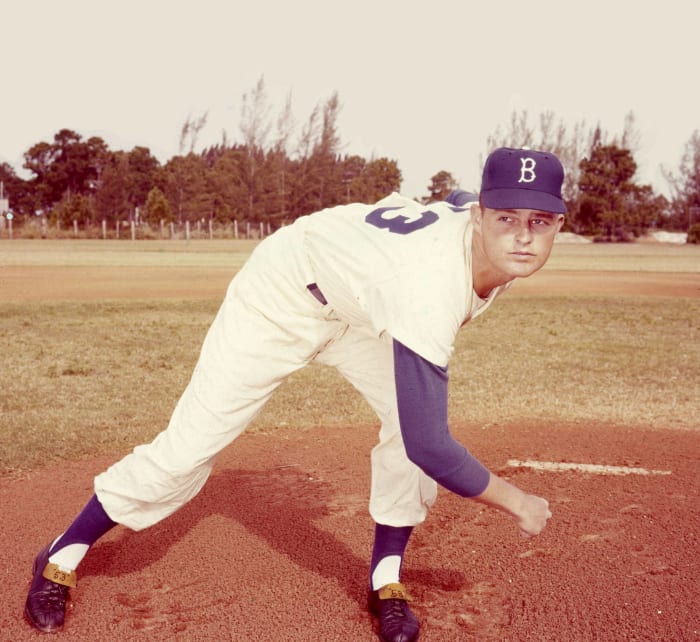
Transcendental Graphics / Contributor
As far as hitting pitchers go, Drysdale is a legend. He hit 29 home runs in 1,169 career at-bats, but what is particularly amazing about his work as a hitter is that the majority of his production came in two flukish, outlier seasons. As a 21-year-old in 1958, Drysdale hit an astounding seven home runs in just 66 at-bats, good for a .591 slugging percentage and an .852 OPS. Seven years later, at age 28, he hit .300 in 130 at-bats, cracked seven more home runs and had an .839 OPS. Oh, and he won a Cy Young and is in the Hall of Fame. Not bad, not bad at all.
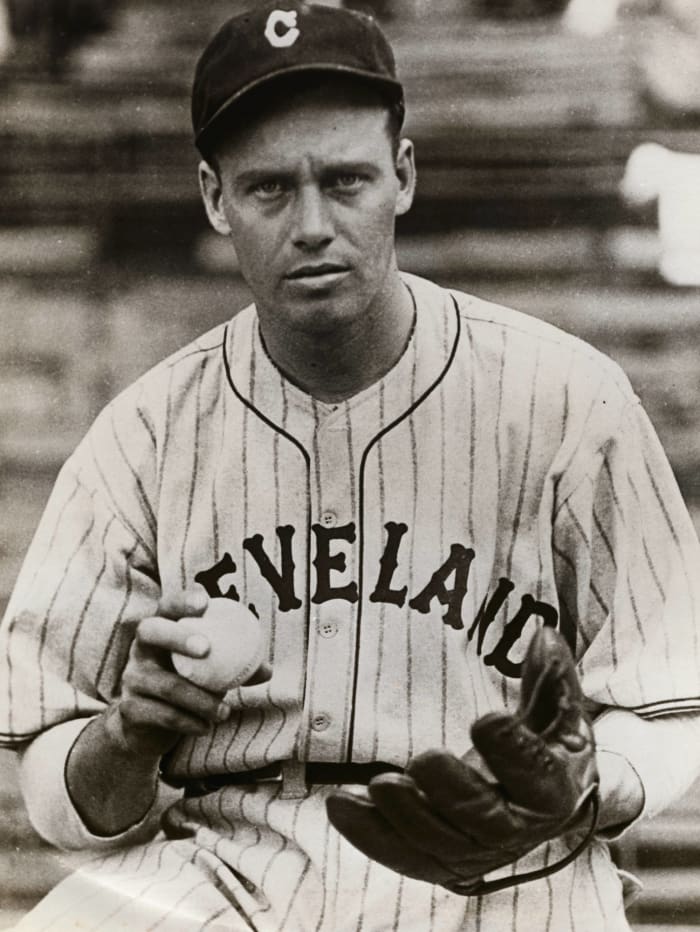
George Rinhart / Contributor
Here’s a pretty good synopsis of Ferrell’s talents as a hitter: His 38 career home runs are the all-time record for a pitcher, he was so good as a hitter that he was often used in a pinch-hitting capacity, and he had two seasons with an OPS better than .950, not to mention two more above .800. Ferrell might have been playing in the 1930s, but those numbers are impressive in any era. He wasn’t too shabby as a pitcher, either, winning 193 games in a 15-year career.

Mike McGinnis / Stringer
Gallardo had an impressive early start to his career, finishing seventh in the National League Cy Young race in 2010, but his talents weren’t limited to the mound. That same season, he slugged four home runs and finished with an .837 OPS while also managing to hit .254. That was by far his best offensive season. A move to the American League in 2015 finished him as a hitter, but he made the bottom of the Brewers lineup formidable every time he pitched.

Bettmann / Contributor
A Hall of Famer, and one of the best, most intimidating pitchers in baseball history, Gibson was also no slouch when it came to hitting. He managed to stay above the Mendoza Line for his career, finishing with a .206 average, and he also hit 24 home runs. What was most impressive about his hitting prowess was that he did it while having to deal with headhunting opposing pitchers unhappy about his aggressive inside pitching.

Dana Kaplan/Sports Imagery / Contributor
A Hall of Famer and member of the 300-win club, Glavine was always a great natural athlete; good enough to get drafted in the NHL and MLB. He made the right choice when he went with baseball, and his natural athletic talents allowed him to shine at the plate. Glavine had virtually no power, but he was an outstanding bunter, leading the league in sacrifices in 2001 and finishing with 216 for his career. He also managed to hit above .200 in nine of 22 seasons.

Rob Schumacher/The Republic
Greinke has a Cy Young Award, six Gold Gloves and a reputation as one of the quirkiest players in the big leagues. He’s also one of the best hitting pitchers in the league. Greinke hit .328 with the Dodgers in 2013 and had his best offensive season in 2019, posting an .888 OPS with three home runs with the Diamondbacks and Astros. Greinke enjoys and takes seriously his hitting, and it shows.

Brian Bahr / Staff
A two-time All-Star and 22-game winner in 1999, Hampton’s career was derailed late by injuries, but for a time he was one of baseball’s better starters and possibly its best hitting pitcher. Hampton swatted seven home runs in 2001 and finished the season with a .291 average and an .891 OPS. He hit .300 or better in four separate seasons, though some were small sample sizes, even for a pitcher. Still, Hampton more than earned his reputation as one of the most dangerous hitting pitchers in the league.
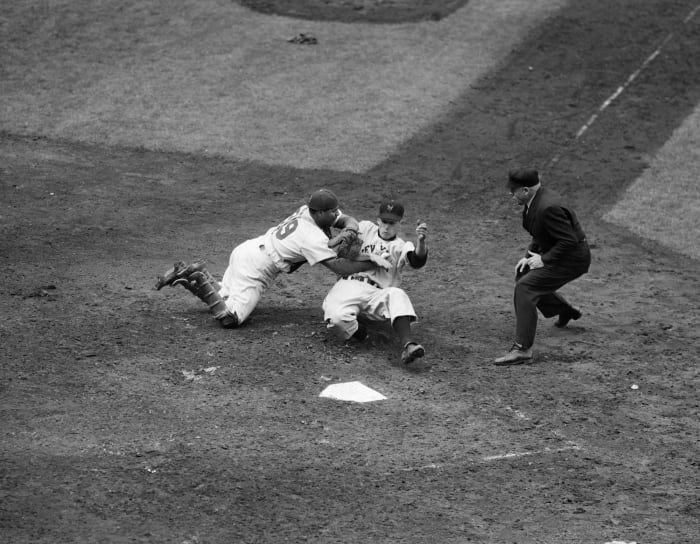
Bettmann / Contributor
Harshman dabbled as a first baseman before switching over to pitcher full time in his mid-20s, and he finished his career with a 69-65 mark and a 3.50 ERA. His work as a hitter was impressive, as he hit 18 home runs in a five-season stretch from 1954-1958. Harshman never hit for great average, as he finished with a .179 career mark, but he took a surprising number of walks, was tough to strike out and had legitimate pop in his bat.
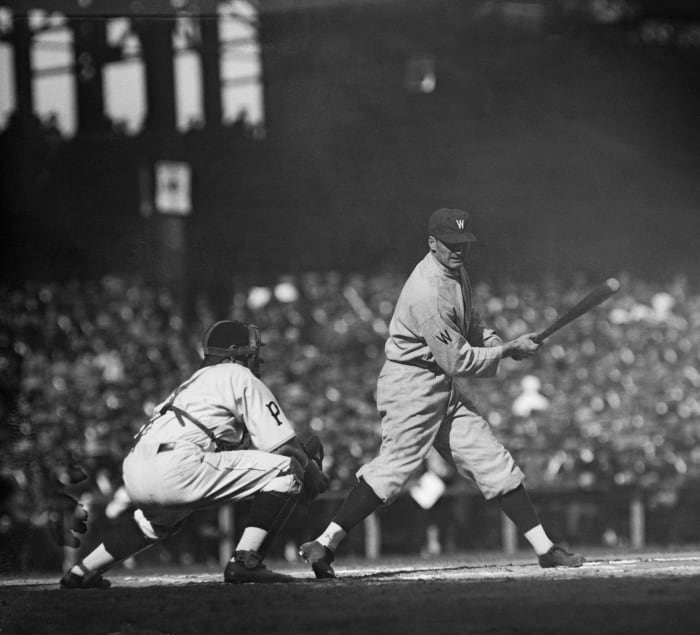
Bettmann / Contributor
One of the game’s all-time best pitchers, The Big Train was also a fearsome hitter in his day. Johnson won 417 games for Washington, six times leading the league in wins. Johnson hit 24 home runs in a 21-year career and was a .235 career hitter. He was a model of consistency, rarely seeing his average dip below .200 for an entire season, putting up solid numbers. His best season as a hitter came at age 36 when he managed a .433 average and a 1.033 OPS in 97 at-bats.

Bettmann / Contributor
Larsen is most famous for throwing what remains the only perfect game in postseason history in the 1956 World Series, when he blanked the Brooklyn Dodgers while a member of the Yankees. Larsen could also hit, finishing his career with 14 home runs, a .242 average and a tremendous 1958 campaign, when he hit four home runs and finished with a .935 OPS in just 49 at-bats.

David Banks-USA TODAY Sports
Look at that picture and you’d be forgiven for thinking that Michael Lorenzen got lost on his way to the gym and ended up a member of a Major League Baseball team. The Reds reliever is coming off his best season as a pro, with a 2.92 ERA in 73 appearances, but he’s truly noteworthy because he cuts a physically imposing profile and can also hit the daylights out of the ball. Never was this more evident than in 2018 when Lorenzen hit .290 with four home runs in just 31 at-bats, good for a 1.043 OPS.
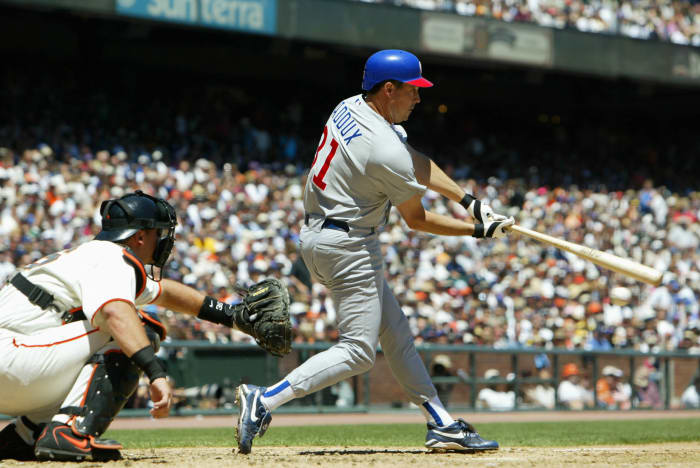
Jed Jacobsohn / Staff
Greg Maddux looks like a professor, a nerd, an accountant — just about anything other than what he was, which was one of the greatest pitchers ever and one of the best pure athletes to ever take the mound. Maddux won 355 games in a 23-year career, and while his exploits on the mound were jaw-dropping, particularly his four consecutive National League Cy Young Awards from 1992-1995, he also carved out a reputation as an occasionally dangerous hitter. Oh, who am I kidding? He had a career .395 OPS, terrible even for a pitcher. He’s primarily included so that we can all bask in the glory of this commercial.

Sports Studio Photos / Contributor
Newcombe pulled off a rare MVP-Cy Young sweep with his 27-7 campaign in 1956. In his 10-year career, he won 149 games, the 1949 Rookie of the Year Award and a World Series. Newcombe was also a dangerous hitter. His 1955 season is one of the best you’ll ever see from a pitcher at the plate (non-Babe Ruth category). That year, Newcombe hit .359 in 117 at-bats, with seven home runs, 23 RBI and a 1.028 OPS. He never came all that close to any of those numbers again, but that level of sustained brilliance deserves recognition, as does his excellent career .271 average.

Bettmann / Contributor
Nuxhall is notable for the fact that he made his MLB debut at age 15, but he carved out a solid career, winning 135 games with a career 3.90 ERA. While he only hit .198 in his 16 seasons, he did have some consistent pop in his bat, with 15 career home runs. Early on he was particularly fearsome, piling up 11 home runs from 1953-1956. He was particularly great in 1953, finishing the year with a .327 average and a .928 OPS.

Christian Petersen / Staff
Owings the pitcher? Nothing to see here. He had a 32-33 record and a 4.86 ERA in a career that spanned six seasons. Ho-hum. Owings the hitter? That was an altogether different story. He burst onto the scenes as a rookie, hitting four home runs in just 60 at-bats and posting a .333 average for the year, not to mention a 1.033 OPS. He followed that up by hitting .304 the following year and then added three more home runs to his total the year after that. Owings hit nine home runs in the majors, and ended his career with a .283 average and an .813 OPS, the latter figure the best all time for a pitcher.
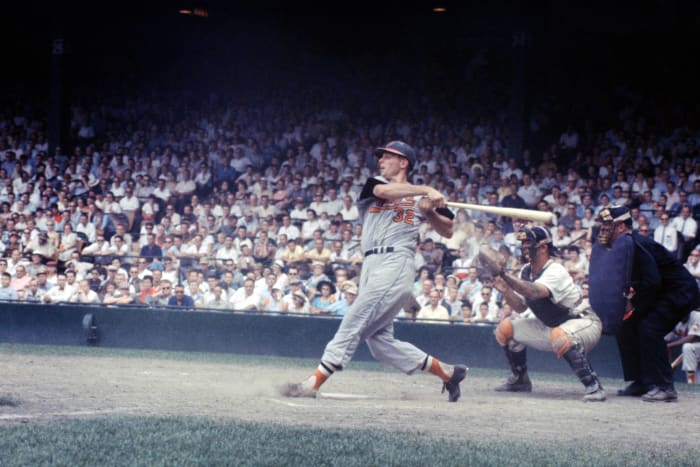
Hy Peskin Archive / Contributor
Pappas won 209 games during a 17-year career, and by some measures he doesn’t deserve to be called a great hitting pitcher. He finished his career with a paltry .354 OPS and hit just .123 as a pro. Still, he did manage to clobber 20 home runs, and while I never saw him hit, one gets the sense that he stepped into the batter’s box with one plan: Swing as hard as possible and hope for the best. Nothing but respect for that approach.
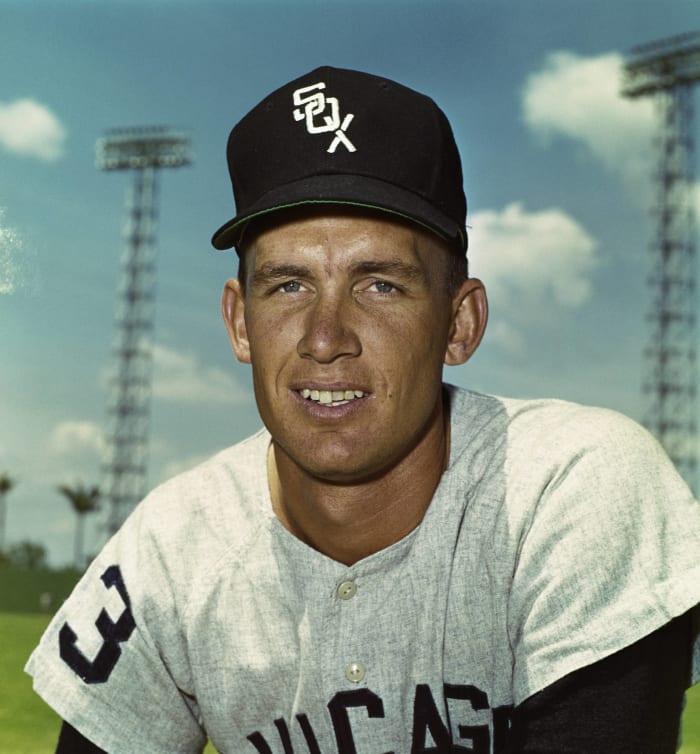
Bettmann / Contributor
Peters won 124 games in a 14-year career and finished with a solid 3.25 ERA. He also made his mark as a hitter. His best season was his rookie campaign in 1963 with the White Sox, one that saw him win Rookie of the Year. That season, Peters hit .259 with three home runs. He would remain a consistent power threat throughout the rest of his career, finishing up with 19 home runs and a .222 average.

Bettmann / Contributor
Three All-Star selections, the 1935 World Series with Detroit and a terrific nickname; Rowe had it all. He was also a good hitter. In 15 seasons, Rowe clobbered 18 home runs, hit .263, and had an OPS of .710. He hit .300 or better on three separate occasions and failed to hit .200 for a season just four times in those 15 years. And it bears repeating: He went by “Schoolboy.”

Transcendental Graphics / Contributor
Pretty sure you know about this guy. As a pitcher, you might be interested to learn that he went 94-46 in his career with a 2.28 ERA and won the ERA title in 1916, at 1.75. Next!

Focus On Sport / Contributor
Spahn won 363 games in a 21-year career, took home the National League Cy Young Award in 1957, was a 17-time All-Star and won a World Series in 1957. He also has the second-most home runs of any pitcher in history, with 35. Spahn was a model of consistency, never hitting more than four round-trippers in a single season but typically knocking a few out of the yard. Aside from a 1958 season that saw him hit .333, Spahn was not a particularly great hitter, but his power more than made up for that.

Bettmann / Contributor
A guy who went by “Sloppy” doesn’t really need much else added to his story, but Thurston was a good hitting pitcher in the 1920s and 1930s. He finished his nine-year career with a .270 average and hit over .300 four separate times in his career. He never showed much power, with only five home runs, but he was a triples machine, with 10 to his credit.
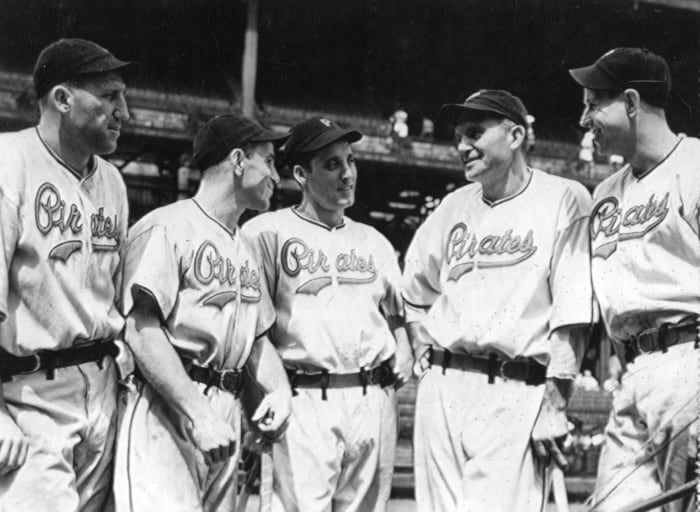
Transcendental Graphics / Contributor
Tobin had a losing record for his career despite a 3.44 career ERA. He led the league in losses in 1942 but did earn some small measure of revenge, hitting six home runs that season on the way to 17 for his career. Tobin’s career numbers would have looked poor for a position player, but his .230 average and .648 OPS were more than respectable for a pitcher, even in an era where solid hitting from that position was slightly more common.

Bruce Bennett / Contributor
The longtime Tigers hurler won 170 games in a 15-year career, posting impressive numbers in the process, including an ERA title in 1944. That wasn’t his only significant achievement that season; Trout also hit five home runs, a career best, and batted .271. Trout ended up with 20 home runs for his career and managed to hit better than .200, finishing his time in the majors with a .213 average.

Eliot J. Schechter / Stringer
Willis took the league by storm with his Rookie of the Year-winning performance in 2003, going 14-6 and helping lead the Marlins to a World Series in his age-21 season. He went on to lead the National League in wins in 2005, going 22-10 with a 2.63 ERA. Willis was known for his infectious energy and funky windup, but only the first quality applied to his hitting, which was quite traditional and quite dangerous. Willis had just nine home runs for his career, but he hit .244 overall and managed a .286 mark in 2007, with an .856 OPS to boot. Willis’ career might have been short, but he made his mark on the mound and in the batter’s box.
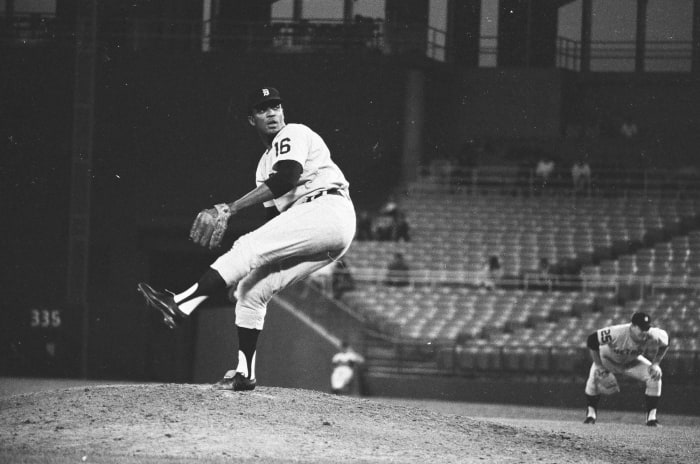
The Sporting News / Contributor
Wilson led the league with 22 wins for the Tigers in 1967, and while he was an above-average pitcher for the duration of his 11-year career, he was nearly as well-known for his prodigious power. Wilson hit 35 home runs in all, including 18 in a three-season stretch from 1964-1966 and was a classic feast-or-famine hitter. He managed just a .195 average overall, but the threat of his power forced opposing pitchers to deal carefully with them, and he still made them pay.
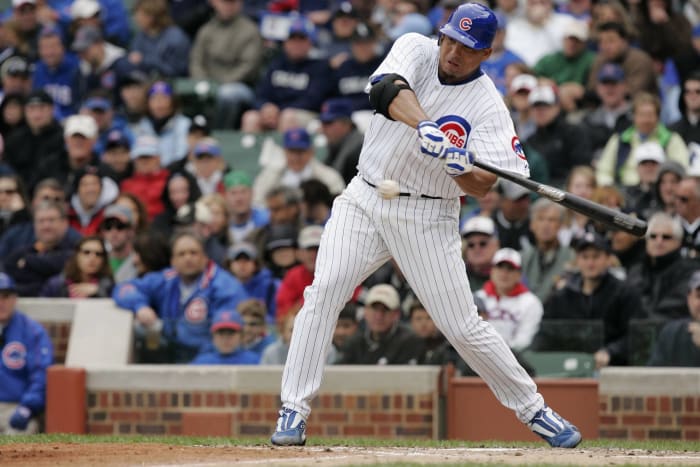
Brian Bahr / Stringer
Zambrano was one of the league’s fieriest players over the course of his 12-year career, the kind of player worth the price of admission whether you were cheering for him or not. He led the league with 16 wins for the Cubs in 2006, but his prowess wasn’t limited to the mound. Zambrano was a menace at the plate, with 24 career home runs and a .238 average. Not only that: He was a switch-hitter, and his approach at the plate might have been more intense than it was on the mound. One of the most fun players to watch in recent baseball history, no matter what he was doing.
Chris Mueller is the co-host of The PM Team with Poni & Mueller on Pittsburgh’s 93.7 The Fan, Monday-Friday from 2-6 p.m. ET. Owner of a dog with a Napoleon complex, consumer of beer, cooker of chili, closet Cleveland Browns fan. On Twitter at @ChrisMuellerPGH – please laugh.




